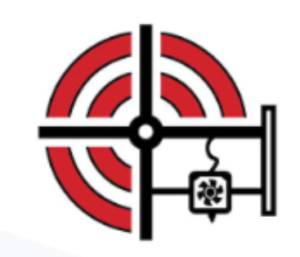Forensics and predictive failure analysis play a critical role in the safe and effective adoption of additive manufacturing—especially as the technology enters more high-stakes industries.
Understanding failure is, ironically, one of the keys to success, and this holds in nearly every field. If a surgeon knows a type of suture technique that will lead to a bad patient outcome, they will choose a better alternative. If a building collapses due to poor design or construction, the method will be scrutinized and either improved or completely abandoned altogether. With new technology, the risk of failure can be a barrier to widespread adoption. The key is to study and understand failures and use what we know about materials, processes, and design to predict and prevent them from happening.
For technologies like additive manufacturing (AM), new materials, manufacturing processes, and designs are being developed and introduced simultaneously. With a relatively limited data set and the lack of established codes and standards, it is imperative to use tools like predictive failure analysis and forensics to ensure the reliable performance and safe, sustainable adoption of AM across industries. As the technology scales, the risks of unintended consequences grow. Without a clear framework for identifying, analyzing, and mitigating failure, the AM industry risks a “Three Mile Island” event—where a high-profile failure severely stalls or reverses the progress of promising technology.
Focus 1: Traditional Manufacturing — Built on Known Quantities
For decades, traditional manufacturing has relied on predictable systems. Engineers design with known materials, failure modes, and safety factors in mind. We understand how castings fatigue, welds crack, and machining tolerances affect long-term durability. Design life is established based on this data, and safety margins are baked into every structure, from bridges to airplanes. Even when we push the limits of design in medical implants, aerospace structures, or nuclear components, we do so within a framework of accumulated knowledge and risk mitigation. We know what failure looks like. And more importantly, we know how to avoid it.
Focus 2: Additive Manufacturing — Rapid Growth, Shallow Understanding
Additive manufacturing does not have the same foundational precedent, and while on the surface it may appear the same, it is really flipping the script. Instead of designing for a material, we’re often designing with it—while simultaneously creating it. AM blurs the line between material science and structural engineering, merging them into a single, often opaque process. In many industries, only a select few truly understand the intricacies of print parameters, build orientations, thermal gradients, and their impact on microstructure, interlayer interaction, and long-term part performance. These variables—and the expertise required to manage them—can also vary dramatically across different materials and printing technologies, leading to a wide range of potential failure modes.
Meanwhile, investment is flooding in. Startups are promising faster, cheaper, and lighter parts. Companies are 3D-printing buildings, aircraft components, and medical devices. And the ethos of “move fast and break things” has jumped the fence from software into hard manufacturing. But unlike a broken app, a collapsed wall, a fractured turbine blade, or a failed implant, these have real, and sometimes catastrophic, consequences.
Focus 3: As AM Expands, We Need to Expand Our Understanding
The additive manufacturing industry is not slowing down—it’s expanding into construction, energy, defense, and healthcare at a remarkable pace. In 2024, the global construction 3D printing market was valued at $53.9 million, and it’s projected to grow to $4.2 billion by 2030. Companies like Walmart and Starbucks are already printing operational buildings. Whether the designs are simple CMU-style boxes or more elaborate structures, the risk is the same: a new method with unknown long-term behavior.
And this isn’t theoretical. In 2020, the FDA issued a recall for Stryker’s Tritanium Posterior Lumbar (PL) Cage—a 3D-printed spinal implant with a novel porous titanium structure designed to promote bone in-growth. It was cutting-edge and promising: bespoke, biocompatible, and theoretically high performing. But reports of fractures during and after surgery have led to a recall. The root cause(s) of the failure are still under investigation, but it is unlikely that the problems were just bad material or weak geometry. The failures stem from how the implants were tested in the real world, under real loads, and how that performance deviated from expectations.
Was the design flawed or the material defective? Maybe. Ultimately, the lesson was that the failure modes of AM devices and materials aren’t yet fully understood. Issues such as anisotropic strength, residual stresses, poor layer bonding, or microstructural unpredictability may not always show up in early testing. And unless we account for and plan for them, they’ll show up in the field seemingly unexpectedly. In the medical and aerospace fields, these risks are often found during rigorous testing or regulatory processes. But what happens when AM enters industries that don’t have the same level of scrutiny?
Starbucks recently opened its first 3D printed location in Texas. In photos of the building, there appears to be evidence of layer issues. And Alquist 3D, a concrete construction 3D printing firm, recently built an 8,000-square-foot expansion for Walmart in Athens, Tennessee. They ran into unexpected issues with the original print material due to the site’s temperature and humidity. Layer adhesion and alignment were inconsistent, threatening the quality of the build. They overcame the problem by switching to a more robust—and expensive—material that ended up impacting the cost of the project, but seemingly nothing else.

Alquist 3D built a Walmart expansion in Tennessee, resolving material issues with a pricier mix, though layer flaws remain visible.
While the building is seemingly fine, the evidence of layer issues and deposition accuracy is still apparent. The episode highlights a key point: failures in additive manufacturing (AM) may not present as dramatic collapses. Instead, they may emerge subtly through cost overruns, cumulative variations like misalignment, interlayer defects, or material gradations that remain undetected until much later. These issues could surface further down the line, leading to costly rework and root cause analysis. While this is not unlike failures in traditional construction, the difference lies in predictability—such failures are generally easier to foresee in conventional methods.

Alquist 3D built a Walmart expansion in Tennessee, resolving material issues with a pricier mix, though layer flaws remain visible.
Conclusion: Failure Analysis Is a Core Pillar of AM
Failure in AM is not a matter of if—it’s when. Aerospace, medicine, energy, and academia have all experienced failures with AM, but these industries are designed to test limits, mitigate risk, and predict failure. As new sectors embrace the technology, our ability to predict failures and mitigate risk will determine whether the adoption recovers quickly or comes to a halt. Without the right forensic insight and predictive tools, we risk mistaking these failures as proof that “AM doesn’t work,” rather than recognizing them as signs that we simply didn’t look closely enough at the right variables.

Close inspection of a retail building wall reveals equipment shifts, layer misalignments, and cuts—minor issues that highlight the immaturity of the process and the need for refinement.
Call to Action: Design with Failure in Mind
As designers, engineers, builders, and decision-makers, we need to integrate failure analysis into the earliest stages of AM development. This means asking the hard questions: How might this part fail? When will it fail? Under what conditions? And then use that information to modify the design accordingly.
But it also means knowing our limits. Not every designer needs to become a metallurgist, physicist, or print specialist, but those experts must be brought into the room to provide valuable insight. Materials scientists, forensic engineers, and failure analysts must be part of the process from day one.
If we can build that culture now, we give AM the best chance to fulfill its revolutionary potential, without waiting for a failure to force the conversation.
About the Author:
Abraham Calvin is a senior associate in the forensics practice at Thornton Tomasetti in Philadelphia, where he focuses on root cause failure analysis, metallurgy, additive manufacturing, and materials consulting. A materials engineer and manufacturing specialist, Calvin has over a decade of experience working on advanced materials and structural components for aerospace and medical applications. Prior to joining Thornton Tomasetti, he led R&D in high-temperature alloys for AM at Global Advanced Metals and served as a subject matter expert in AM and failure analysis at Boeing.
Images courtesy of Thornton Tomasetti.
Subscribe to Our Email Newsletter
Stay up-to-date on all the latest news from the 3D printing industry and receive information and offers from third party vendors.





